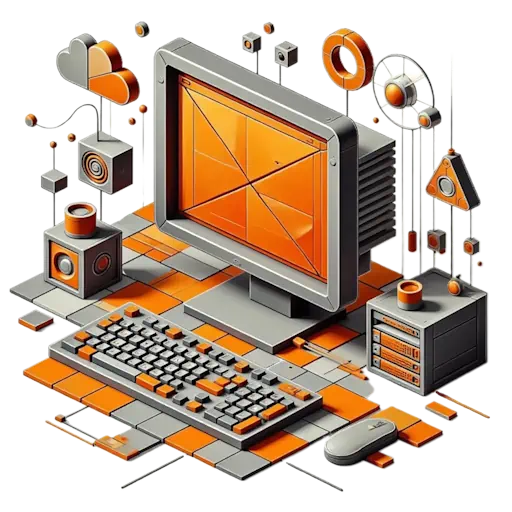


We specialize in building robust, scalable, and cost-effective desktop applications tailored to your business needs—whether you're targeting Windows, macOS, Linux, or all three. Our team delivers solutions of any complexity, from lightweight utilities to enterprise-grade platforms.
Windows Applications
MacOS Applications
Linux Applications
Cross-Platform Solutions
We also offer hybrid solutions, combining technologies like C++ with Electron or .NET to optimize performance and maintainability.
Platform Dependency. Developing separate codebases for Windows, macOS, and Linux increases time and cost. We use cross-platform frameworks like Electron, Avalonia, and Qt to build once and deploy everywhere.
UI/UX Inconsistency. User interfaces often behave differently across platforms, leading to poor user experience. We apply platform-specific UI frameworks or consistent cross-platform design systems to ensure a seamless experience.
Performance Issues. Heavy applications can suffer from slow load times and lag. We optimize performance-critical components using native code (e.g., C++) and profiling tools.
Memory Leaks. Improper memory management can degrade performance over time. We implement rigorous testing and use memory profiling tools to detect and fix leaks early.
Complex Installation & Updates. Manual installation and lack of auto-updates frustrate users. We integrate auto-updaters and package installers tailored to each OS for smooth deployment.
Security Risks. Desktop apps can expose sensitive data if not properly secured. We implement encryption, secure storage, and code signing to protect user data.
Legacy Code Maintenance. Older technologies like Windows Forms are hard to maintain and extend. We modernize legacy systems incrementally, wrapping or refactoring them into newer frameworks.
Concurrency Challenges. Poor thread management can lead to crashes or unresponsive UIs. We use modern async programming patterns and thread-safe libraries to ensure stability.
Third-Party Integration. APIs and external tools may change or break unexpectedly. We isolate dependencies with abstraction layers and monitor for changes proactively.
High Development Costs. Building and maintaining separate apps for each OS is expensive. We reduce costs through shared codebases and efficient cross-platform development strategies.
Time-to-Market is important. Complex builds and testing cycles delay product launches. We use agile methodologies and CI/CD pipelines to accelerate development and delivery.
Team Scalability. Specialized skills for each platform are hard to scale. We train developers in versatile, modern frameworks that cover multiple platforms.
Unpredictable Maintenance Costs. Bug fixes and updates can become a financial burden. We offer proactive support plans and modular architectures to minimize long-term costs.
Initial Consultation & Idea Discovery.
We kick off with an in-depth conversation about your project—uncovering your vision, exploring the best technical approaches.
Protecting your ideas is our top priority: we’re happy to sign an NDA at this stage to keep everything you share completely confidential.
Roadmap
We provide initial feedback on the idea, including a general complexity assessment. Together, we explore various implementation approaches. From this, we define a high-level roadmap for moving forward.
Scoping the First Iteration
We define and estimate the scope of the first development iteration.
This can be structured as a fixed-price engagement or based on time and materials, depending on the project’s nature and client's preferences.
Development & Testing: Iteration 1
Our team develops the first iteration, followed by thorough internal testing to ensure quality, stability, and alignment with your requirements.
Infrastructure Setup & Delivery: Iteration 1
We configure all necessary IT infrastructure to host your project securely and efficiently—whether it's cloud-based, on-premises, or hybrid. Once the environment is ready, we deploy the first iteration for your review and feedback.
Scoping, Development and Delivery of Next Iterations
Based on feedback and evolving needs, we define the scope and estimate the next iteration. Then we carefully develop, test and deliver it.
This process repeats as long as you have new requirements and ideas.
Ongoing Technical Support
Even after delivery, we don’t disappear. We offer ongoing technical support, maintenance, and monitoring to ensure your system remains reliable, secure, and up-to-date.